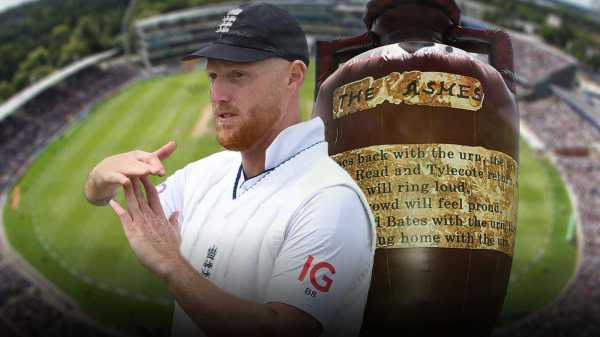
New to The Ashes? Then read on for our beginners guide as we tell you how the men’s series began, who could star this time around and the key terms you need to know…
What is The Ashes?
One of the great sporting rivalries. England vs Australia play each other in a series of Test matches (that number has remained constant at five since 1998) as they battle for a little urn of immense prestige. Although England and Australia first met in a Test match in Melbourne in 1877, the Ashes as we know it started with the 1882/83 series. This summer’s showdown between Ben Stokes’ rejuvenated England and Pat Cummins’ Ashes holders Australia will be the 73rd instalment, with the hosts looking to win the series for the first time since 2015, when Sir Alastair Cook was captain.
The Ashes – Live
Friday 16th June 9:30am


Why is The Ashes called The Ashes?
Good question. After Australia claimed their first Test win on English soil, a narrow seven-run victory at The Oval in 1882 after bowling their hosts out for 77, a young journalist called Reginald Shirley Brooks penned a mock obituary for English cricket, writing: “In affectionate remembrance of English cricket which died at The Oval, 29th August, 1882. Deeply lamented by a large circle of sorrowing friends and acquaintances, RIP. NB The body will be cremated and the Ashes taken to Australia.” Later that year, then-England captain Ivo Bligh led his team down under with the purpose of “regaining those Ashes” – which he did, as England won a three-Test series 2-1.
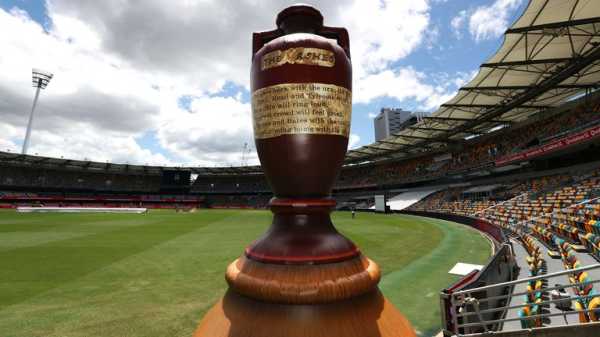
Image: The Ashes started in 1882/82 with this summer's series the 73rd to be contested
Where does the urn come in?
The story goes that after winning the series Bligh was presented with an urn by a group of women, one of whom, Florence Morphy, would become his wife. The urn reportedly contained the ashes of a bail used in the third match – the ashes of Australian cricket, if you will. The urn the teams raise after winning a series is actually a replica with the original terracotta trophy, which stands 10.5cm tall, on display at the Lord’s museum having been presented to the Marylebone Cricket Club following Bligh’s death in 1927.
Australia are Ashes holders, you say?
Yep. Australia regained them when they thumped England 4-0 on home turf in 2017/18, retained them with a 2-2 draw in England in 2019 and then kept them once again with another 4-0 drubbing of their opponents down under in 2021/22. That tour a couple of winters ago was an utterly dismal one for England, who lost the series in a shorter amount of time (12 days) than they had spent in quarantine (14 days). At that point, the team were at rock-bottom. Now, though, they are flying high.
Trending
- Transfer Centre LIVE! Zaha, Rice, Palhinha latest
- Mbappe won’t trigger PSG extension | Forward could leave this summer
- Man Utd unlikely to go for Kane | Contacts made about Hojlund
- Man Utd to make formal bid for Mount | Long-standing interest in Caicedo
- Papers: PSG make contact with Zaha
- Man Utd transfers: Maguire exit ramped up amid Kim interest
- US Open LIVE! First-round groupings, tee times confirmed | Merger fall-out continues
- The agony of Deportivo La Coruna continues
- NBA Finals: Can Heat launch unlikely comeback? Will Nuggets win in five?
- Arsenal transfers: Gunners to continue Rice pursuit
- Video
- Latest News
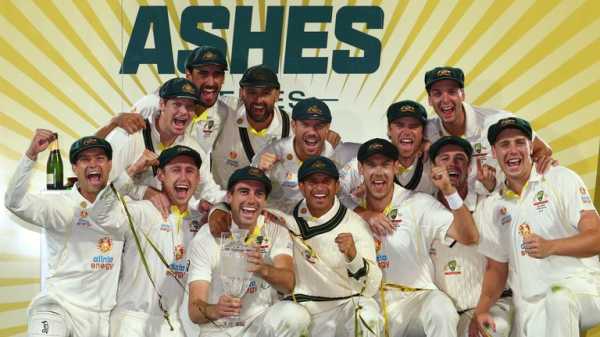
Image: Australia won The Ashes in 2021/22, thrashing England 4-0
What’s changed?
Everything. Coach, captain, director of cricket, mindset, mood and results. Since Brendon McCullum became Test coach – director of cricket Rob Key opted to split the roles between red and white-ball cricket following the Ashes debacle – and Ben Stokes took on the role of skipper, England have gone from one win in 17 Tests to 11 victories in 13. In that time they have beaten New Zealand, India, South Africa, Pakistan and Ireland while playing an ultra-aggressive brand of cricket dubbed Bazball by those outside the camp, in a nod to coach McCullum and his nickname Baz. The policy is to entertain. England have delivered.
Stokes is the key man, right?
Undoubtedly. While Bazball is named after McCullum, and the laidback New Zealander has certainly helped free up the players, it is captain Stokes who has played the crucial role. Under his leadership, the side have become the first to score 500 on the opening day of a Test; completed a historic 3-0 sweep in Pakistan, cantered to their highest successful run chase – 378 against India at Edgbaston last summer – and regularly seen players threaten to eclipse Gilbert Jessop’s England-record 76-ball Test century. No one has done it yet, but it seems only a matter of time.
Also See:

We look at the emergence of ‘Bazball’ – England’s new brand of Test cricket under Ben Stokes and Brendon McCullum
Who are England’s players to watch?
The Ashes, as ever, starts way before the games begin with speculation and injuries always cropping up. England were forced into a rethink after spin bowler Jack Leach was ruled out with a back injury and have lured Moeen Ali out of Test retirement to fill the void.
Seam-bowling-wise a lot may rest on James Anderson and Stuart Broad, who have a combined age of 76 and combined Test wicket tally of 1,267, but also look out for Ollie Robinson, whose 66 wickets to date have come at an average under 22, and Mark Wood’s pace.
Batting-wise, everybody goes hard, with Harry Brook’s strike-rate – the number of runs he scores per 100 balls – a startling 99.03 across the seven Tests he has played. Brook has scored 818 runs in that time. Jonny Bairstow, the star of the first Bazball summer with four hundreds, is back after injury, while Joe Root, having recently passed 11,000 Test runs, is a beautiful batter to watch.
As ever, though, Stokes will be the focus, with his aggressive captaincy, batting ability and – England will hope – his game-changing bowling spells. Despite a dodgy left knee, you sense that won’t stop him making an impact with the ball. The man is an absolute machine.
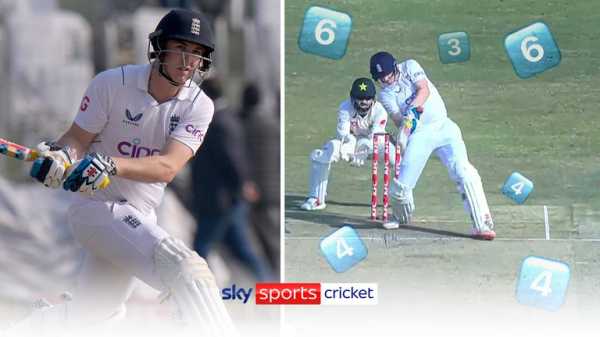
Harry Brook hit the most runs by an England batter in a Test over when he took Pakistan leg-spinner Zahid Mahmood for 27 in Rawalpindi in December
Who are Australia’s players to watch?
The bowling attack, for sure. Australia will hope Josh Hazlewood is fit to play at Edgbaston after sitting out the World Test Championship final against India due to Achilles and side problems.
Hazlewood, fellow fast bowlers Pat Cummins, and Mitchell Starc and spin bowler Nathan Lyon are a formidable quartet and one that may yet prove this new aggressive England’s biggest Test to date. Even if Hazlewood is absent, Australia have a fine replacement in Scott Boland, a man who took figures of 6-7 against England in Melbourne during the 2021-22 series and who now has 33 wickets in eight Tests at an average of 14.57. Such has been Boland’s form, he could play instead of Starc is Hazlewood is fit.
Steve Smith and Marnus Labuschagne do not bat like England but their patient method has proved extremely fruitful. Smith is closing in on 9,000 Test runs – over 3,000 of which have come against England – while Labuschagne has hoovered up runs since stepping in as a concussion replacement for Smith during the 2019 Ashes and is now top of the Test batting rankings. Travis Head is Australia’s most aggressive batter, and is coming off the back of a 106-ball century against India in last week’s World Test Championship final.
Then there is David Warner. The opener has immense pedigree but a lack of recent runs and was dismissed seven times by Broad four years ago while averaging under 10. Will he fire or flounder this time?
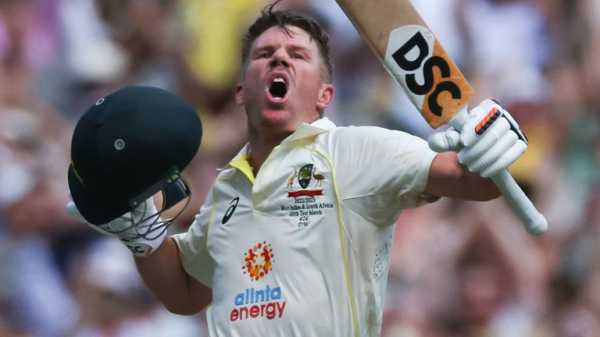
England bowler Stuart Broad says he is looking forward to renewing his rivalry with Australia’s David Warner during The Ashes
When and where are the games taking place?
- First Test (Edgbaston) – Friday June 16 – Tuesday June 20 (11am start)
- Second Test (Lord’s) – Wednesday June 28 – Sunday July 2 (11am start)
- Third Test (Clean Slate Headingley) – Thursday July 6 – Monday July 10 (11am start)
- Fourth Test (Emirates Old Trafford) – Wednesday July 19 – Sunday July 23 (11am start)
- Fifth Test (The Kia Oval) – Thursday July 27 – Monday July 31 (11am start)
All games will be broadcast live on Sky Sports.
Ashes glossary
A few terms you may hear over the coming weeks…
Bazball – we’ve mentioned it so what actually is it? Well, it’s the name given to England’s attacking brand of cricket, where positivity – which should not be confused with recklessness – is a prerequisite. Batters looking to score runs not drop anchor, bowlers looking to take wickets not hold up an end, fielders chasing down every ball, and cricket that keeps fans excited and eager for more. For England, results matter but entertainment matters more.
Nighthawk – a traditional nightwatchman goes in towards the end of the day at the fall of a wicket to protect a more accomplished batter for the following morning. England don’t do tradition, though. They deploy a nighthawk – a nightwatchman on steroids who comes out swinging his bat, looking to frazzle the bowlers. Chief Nighthawk is Broad. When he comes in, watch out! He’ll swish and miss and could fall cheapy – but he might just collar quick runs.
Draw – you know what this is – a sporting contest where there is no winner – just don’t expect to see too many this summer. There have been none in the 13 Tests England have played under Stokes and McCullum, with 11 wins and two defeats. England’s mantra is to produce results, even if that means they are the ones who lose.
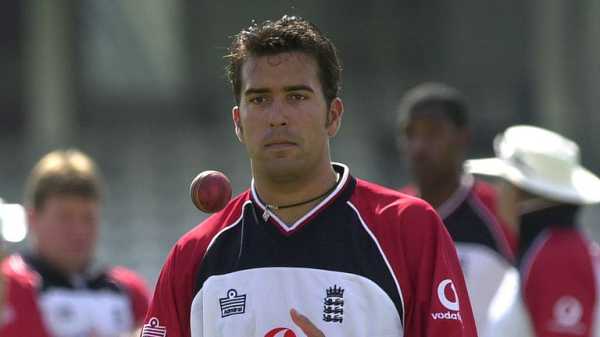
Image: Jimmy Ormond perfected the art of sledging during the 2001 Ashes
Sledging – the name for the banter between teams as players try to get inside each other’s heads. Occasionally it can stretch too far and veer into nastiness but when it’s done right, it adds even more intrigue and humour to the game. A notable example of witty sledging came from England’s Jimmy Ormond during the 2001 Ashes. When told by Mark Waugh – brother of Australia captain Steve – that he was not good enough to be playing for England, Ormond replied “Maybe not, but at least I’m the best player in my family.” Another superb sledge, non-Ashes this time, was when West Indies’ Tino Best looked to smash England spinner Ashley Giles. Andrew Flintoff, fielding at slip, shouted, “Mind the windows, Tino” – after which Best was stumped trying to whack Giles out of the park once more!
DRS – the Decision Review System, which players bring into effect if they want to challenge the on-field umpire’s calls, usually of lbw or caught behind. Sides lose a review if they are proven incorrect with their challenge but retain it if they are correct or if the decision remains with the initial umpire’s call. Umpire’s call stands on lbws that are marginal, depending on where the ball pitched, where it hit the batter and how much of the stumps it was set to strike.
Declaration – this is where a team calls an end to their innings before being bowled out, in the hope of trying to force a result. Stokes’ declaration in the first Test against Pakistan in Rawalpindi in December turned out to be a masterstroke. Eyebrows were raised when he gave the home side four sessions to score 343 on the most docile of pitches but it also gave England four sessions to take 10 wickets, which they managed just before the light faded.
Jaffa – the word used to describe a sensational delivery from a bowler to a batter. See also snorter, crackerjack, rippper etc. The cricket ball itself has various monikers so when the new one is taken you very well might hear it described as nut, a seed, a conker, a cherry or a rock. The bat can also be called the blade or the willow, while the wicketkeeper’s gloves are often called mitts or gauntlets. If you are ‘plumb lbw’, it means there is no debate. You’re out!
Watch The Ashes live on Sky Sports Cricket from Friday. Coverage from Edgbaston begins at 9.30am ahead of the first ball at 11am. You can also follow in-play clips and text commentary across Sky Sports’ digital platforms.
Sourse: skysports.com






